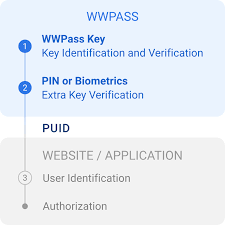
Essential Strategies for Effective Identity Management
In today’s digital landscape, where information is an organization’s most valued asset, Identity Management https://www.wwpass.com/ (IdM) has emerged as a critical component of organizational security. The rise of cyber threats has amplified the need for effective identity management systems to safeguard sensitive data and ensure compliance with various regulations. This article explores the various strategies for successful identity management, its importance, and practical implementations that organizations can utilize.
Understanding Identity Management
Identity Management refers to the processes and technologies used to manage and secure user identities and their access to applications and data. It involves the administration of user identities, roles, and access rights across various systems to streamline operations while ensuring enhanced security. The main objectives of identity management include simplifying user access, enforcing security policies, and maintaining compliance with regulations.
The Importance of Identity Management

The importance of effective identity management cannot be overstated. As organizations increase their reliance on technology and mobility, they face an ever-growing array of cybersecurity threats. Here are some key points highlighting the significance of identity management:
- Data Protection: Protecting sensitive information is vital. Identity management ensures that only authorized users have access to confidential data.
- Reducing Risk: By implementing strict user access controls, organizations can reduce the risk of unauthorized access and data breaches.
- Compliance: Many industries have regulations that mandate strict identity management practices to protect data privacy, such as GDPR, HIPAA, and PCI-DSS.
- Operational Efficiency: Automating identity management processes can lead to improved efficiency and reduced operational costs by minimizing manual tasks.
Key Components of Identity Management
A robust identity management system comprises several key components that work together to ensure security and efficiency in managing user identities. These components include:
- Identity Governance: Establishing policies for user access and maintaining oversight to ensure compliance with internal and regulatory standards.
- Access Management: Implementing access controls to determine who can access what information, ensuring that users have the appropriate level of access based on their roles.
- Single Sign-On (SSO): Allowing users to access multiple applications with a single set of credentials, simplifying the user experience and improving security.
- Identity Lifecycle Management: Managing user identities throughout their lifecycle—from creation and maintenance to deactivation and compliance checks—ensures that access remains relevant and appropriate.
Best Practices for Implementing Identity Management
Implementing a successful identity management system requires a strategic approach. Here are some best practices to consider:

- Conduct a Risk Assessment: Evaluate potential risks and vulnerabilities in relation to user access and identity management to identify the areas needing improvement.
- Establish Clear Policies: Develop clear identity management policies that outline how user access is granted, monitored, and revoked as necessary. Consistently communicate these policies to all employees.
- Utilize Multi-Factor Authentication (MFA): Implement MFA to bolster security by requiring users to provide multiple forms of identification before granting access.
- Regularly Review Access Rights: Conduct periodic reviews of user access rights to ensure alignment with job responsibilities and revoke access for users who have changed roles or left the organization.
- Invest in Training: Provide ongoing training for employees on identity management practices to help them understand security risks and their role in mitigating them.
Future Trends in Identity Management
The field of identity management is continuously evolving, driven by technological advancements and the increasing complexity of cyber threats. Here are a few trends that are expected to shape the future of identity management:
- AI and Machine Learning: The integration of AI and machine learning in identity management tools can enhance real-time monitoring and anomaly detection, enabling organizations to respond effectively to potential threats.
- Decentralized Identity: Emerging concepts of decentralized identity enable users to own and manage their identities, granting permission for access on a need-to-know basis without relying on central authorities.
- Zero Trust Security: The adoption of a Zero Trust model requires continuous verification of all users, regardless of whether they are inside or outside the organization’s network, thereby enhancing security protocols.
Conclusion
Effective identity management is no longer optional in today’s digital world; it is a necessity for protecting sensitive data, meeting compliance requirements, and ensuring operational continuity. By implementing best practices and staying abreast of emerging trends, organizations can significantly enhance their security posture and minimize the risks associated with identity theft and data breaches. As technology continues to advance, staying proactive in identity management will be vital in safeguarding organizational assets and maintaining trust with customers and partners.